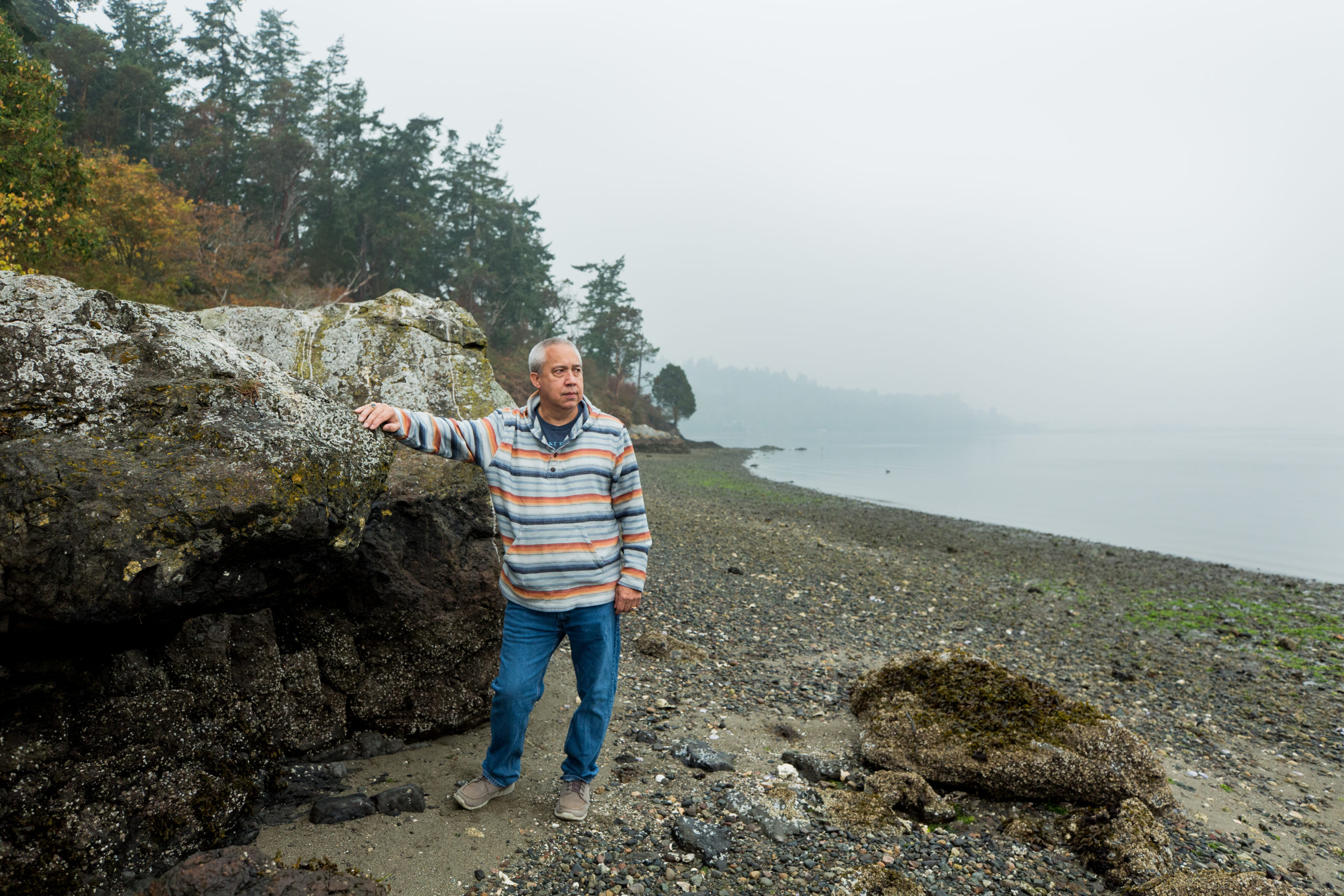
How a scattered Indian nation kept its songs alive when it couldn’t sing face-to-face
The ancient melody rides a thumping drumbeat and preaches the end to all war. As tribal lore tells it, the song was a gift from “the Creator.”
For thousands of years, Samish people have gathered in cedar longhouses along the saltwater shores of the Pacific Northwest, often singing one of the many versions of the “Bone Game Song.” Its soaring notes uplifted campfire crowds and, more recently, tribal meetings in Anacortes, Washington, homeland of the Samish Indian Nation.
But these days, as a pandemic forces social distance, Samish citizens can only convene in one location to share that song and other ancestral traditions – Microsoft Teams.
“A tribe is a family, a community. Any cultural gathering is who we are,” says Emily Baker, a Samish citizen who lives in Seattle, two hours south of Anacortes. “Having these singing and drumming events on Teams is key to a lot of people’s health and wellbeing.
“Reconnecting this way – while staying safe – is healing,” she adds.
From their kitchen tables and living room sofas, hundreds of Samish people have spent parts of their summer and early fall together on Teams, a digital collaboration space. There, they have joined singing classes, swapped tribal stories, held film festivals and created all manner of traditional crafts – from carved rattles to woven headbands.
Those remote reunions, citizens say, have helped the tribe sustain its collective soul.
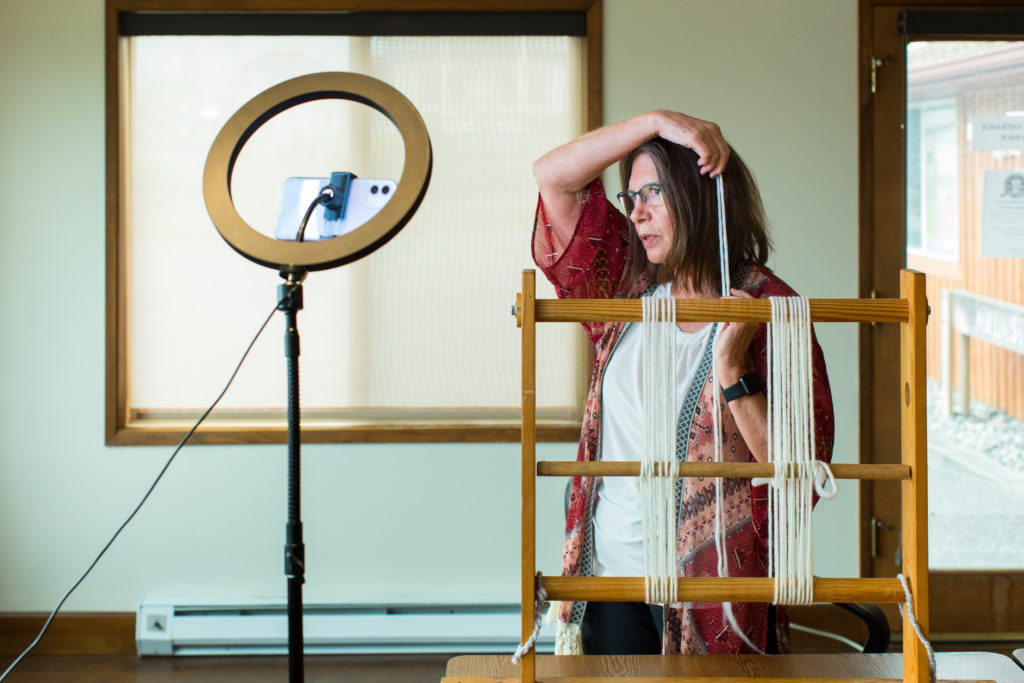
Leslie Eastwood teaches a traditional weaving class on Teams from Samish headquarters.
But hard work has been happening on the platform, too. In late June, the Samish nation held its annual general council meeting on Teams, offering financial, political and legal reports, tribal leader responses to citizen questions collected in advance, and live results of the 2020 tribal council election.
“With COVID-19, we had to get creative,” says Tom Wooten, chairman of the Samish Indian Nation. “Teams allowed us to reach our membership in the U.S., Canada and all over the world. For them, to be able to share knowledge of our accomplishments, it was just amazing.
“It’s about the interaction, and I feel this myself,” he adds. “It’s about your mental health. It’s about your whole physical being, too. We need people to be whole. Seeing other people laughing, smiling and talking is important. We need other people.”

Eastwood participates in a Samish beading class via Teams.
During that virtual meeting in June, Samish leaders found ways to include some beloved protocols.
At previous annual tribal meetings – typically held in a community building at the Samish-owned Fidalgo Bay Resort in Anacortes – Samish veterans carried Samish and American flags into the room, entering to the slow beat of an animal-hide drum.
This year, Leslie Eastwood, the tribe’s general manager, tracked down photos of past presentations of the tribal colors. She used PowerPoint to build a slideshow to share on Teams, adding audio of singers and drummers performing the Samish victory song.
“It was important for me to personalize this meeting since we could not be together,” Eastwood says.
“I wanted everyone seeing those other faces. If we were all sitting there, sitting in those chairs together, those would be the people I normally recognize and see. Those are the people I miss,” she adds. “I threw my heart into it.”
Eastwood also recorded that meeting so Samish citizens could view it at their convenience. In June, 84 tribal members watched the proceedings live and nearly 20 later logged into the recording. (The Samish nation has a population of more than 2,000 people.)
Tribal leaders say the actual participants totaled about 150, as many families watched together, clustered around individual computers, meaning that virtual meeting drew roughly the same number of people as in-person meetings in past years.
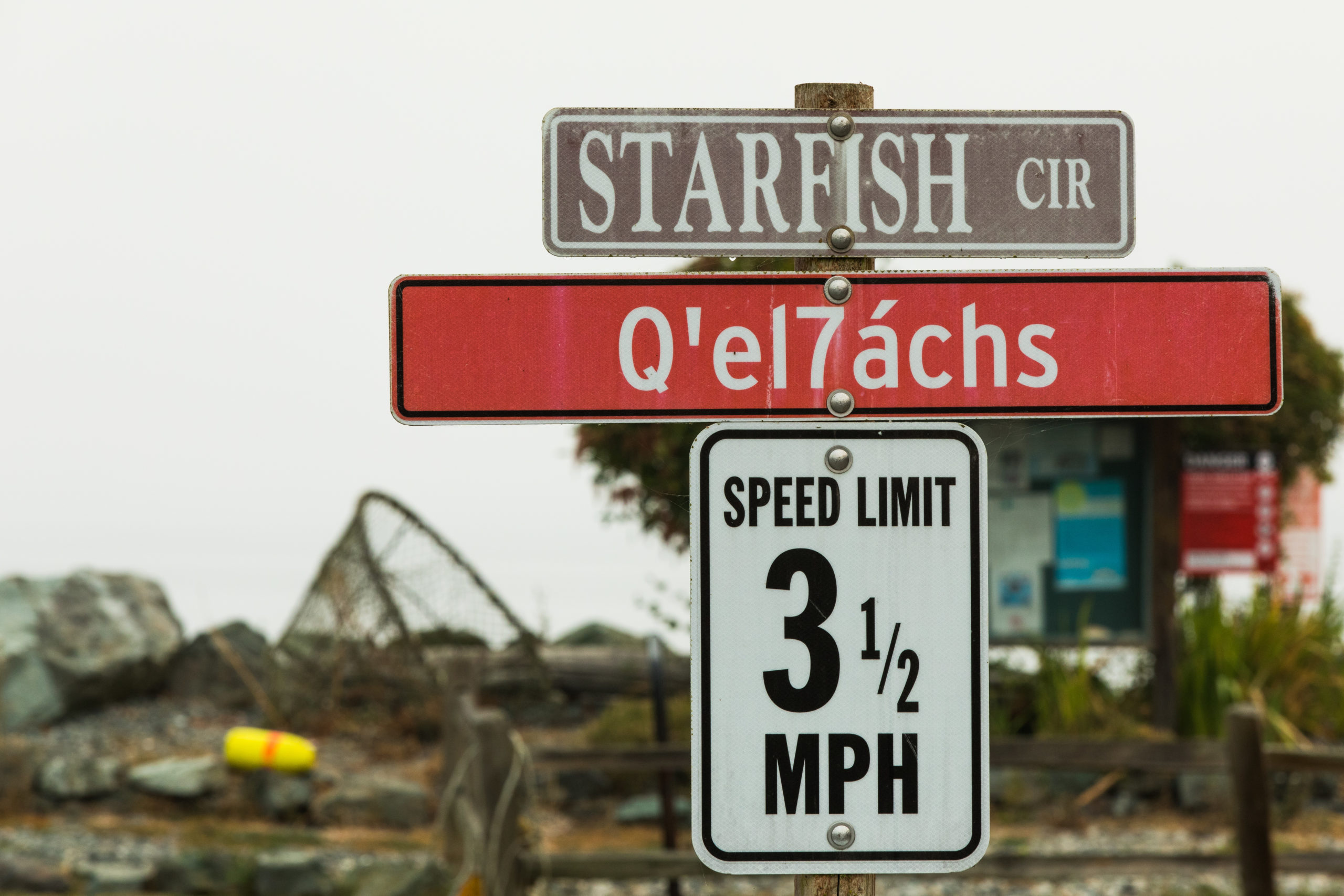
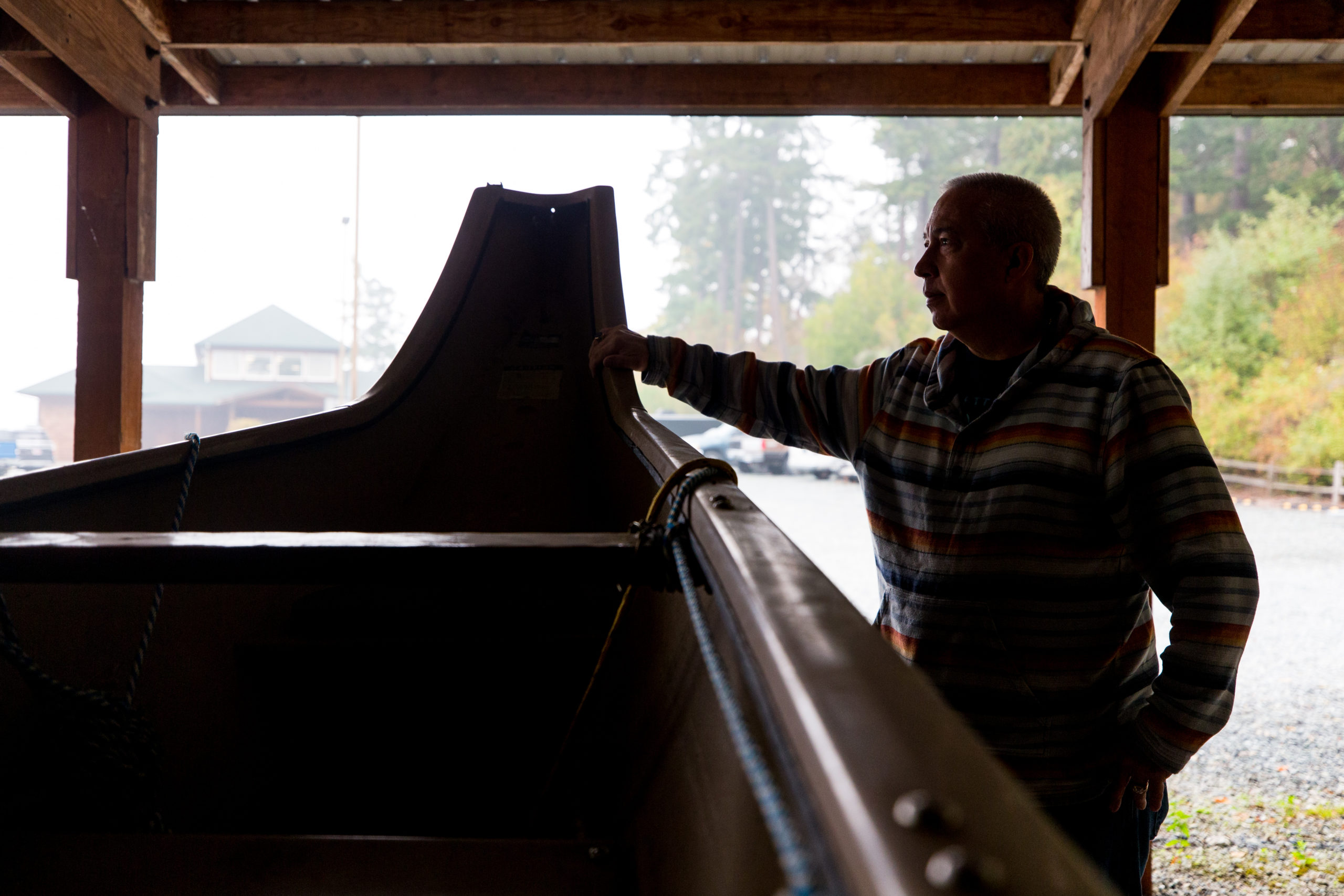
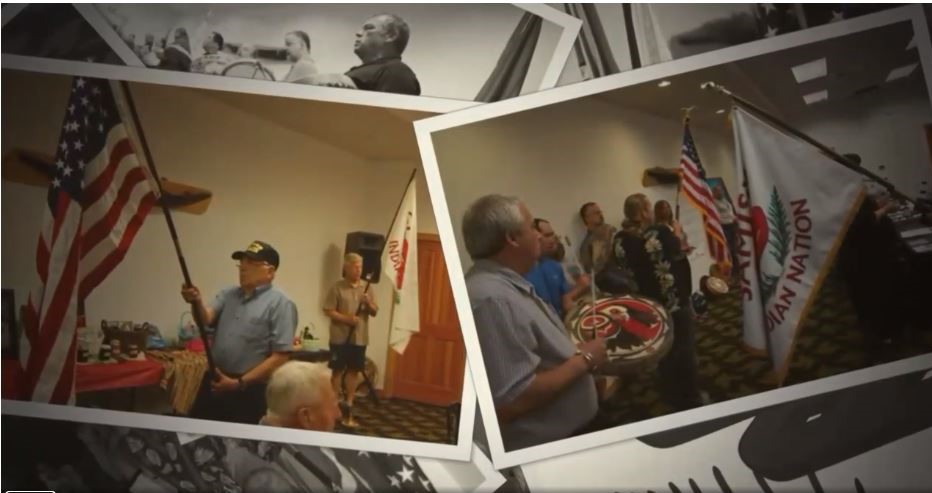
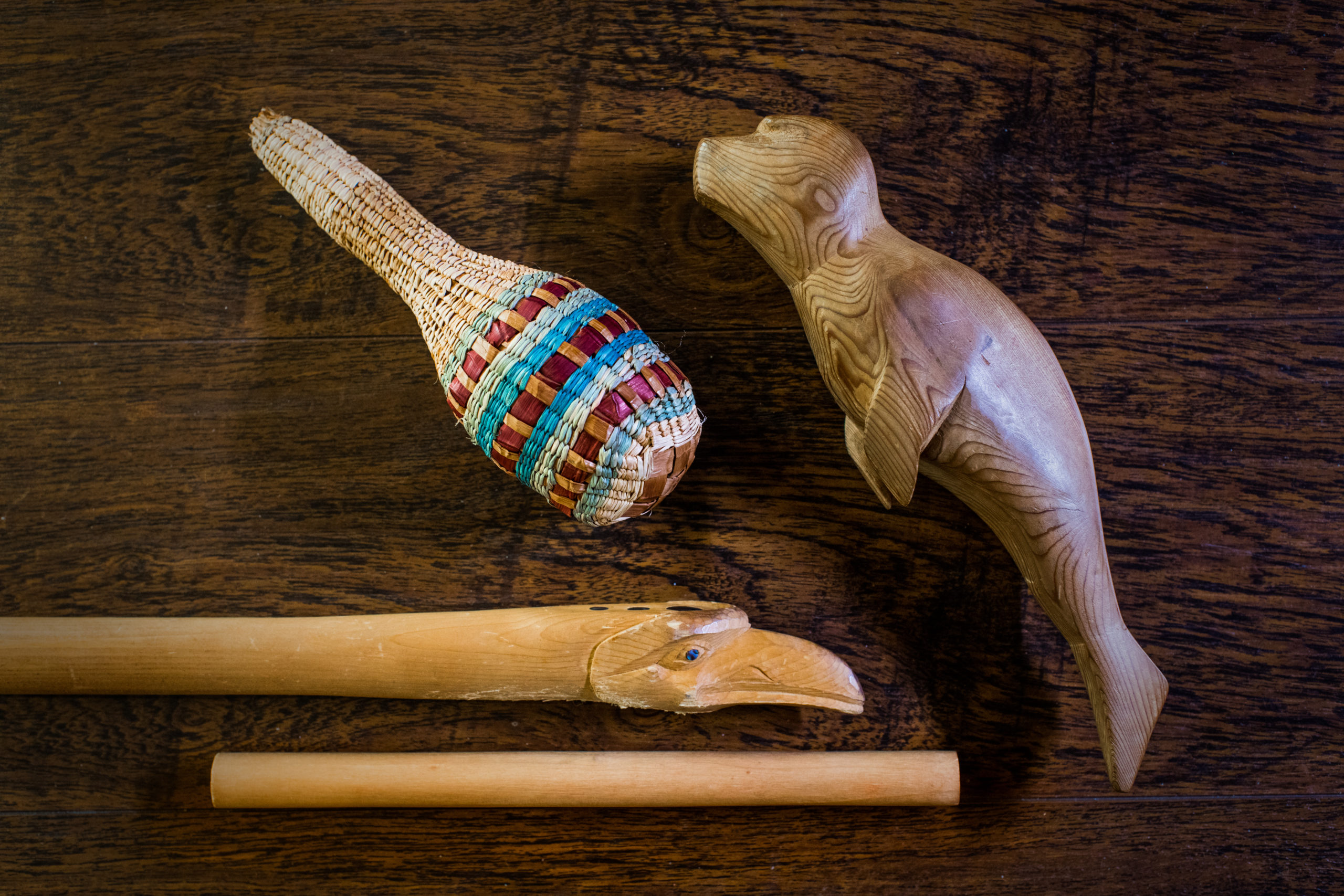
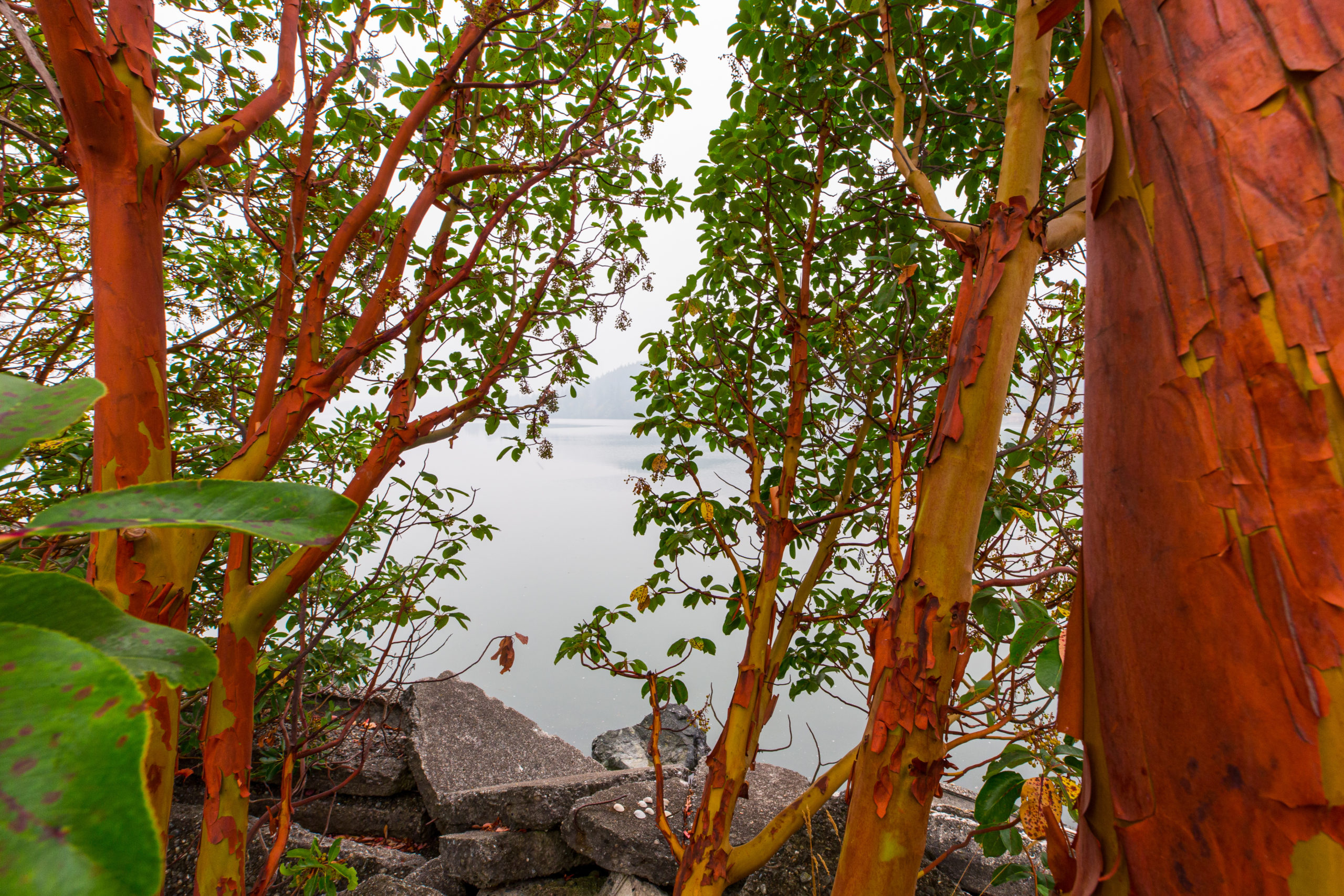
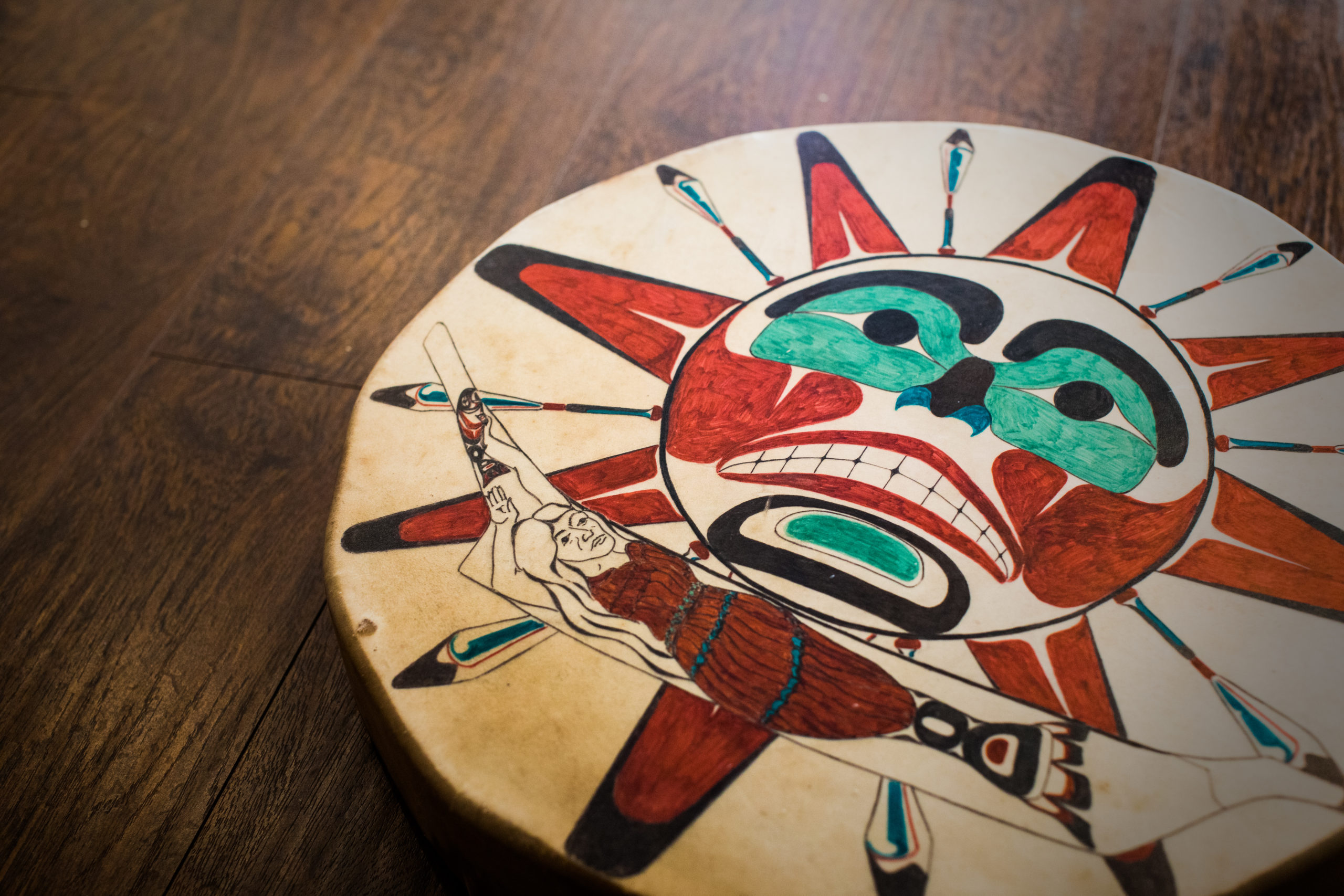
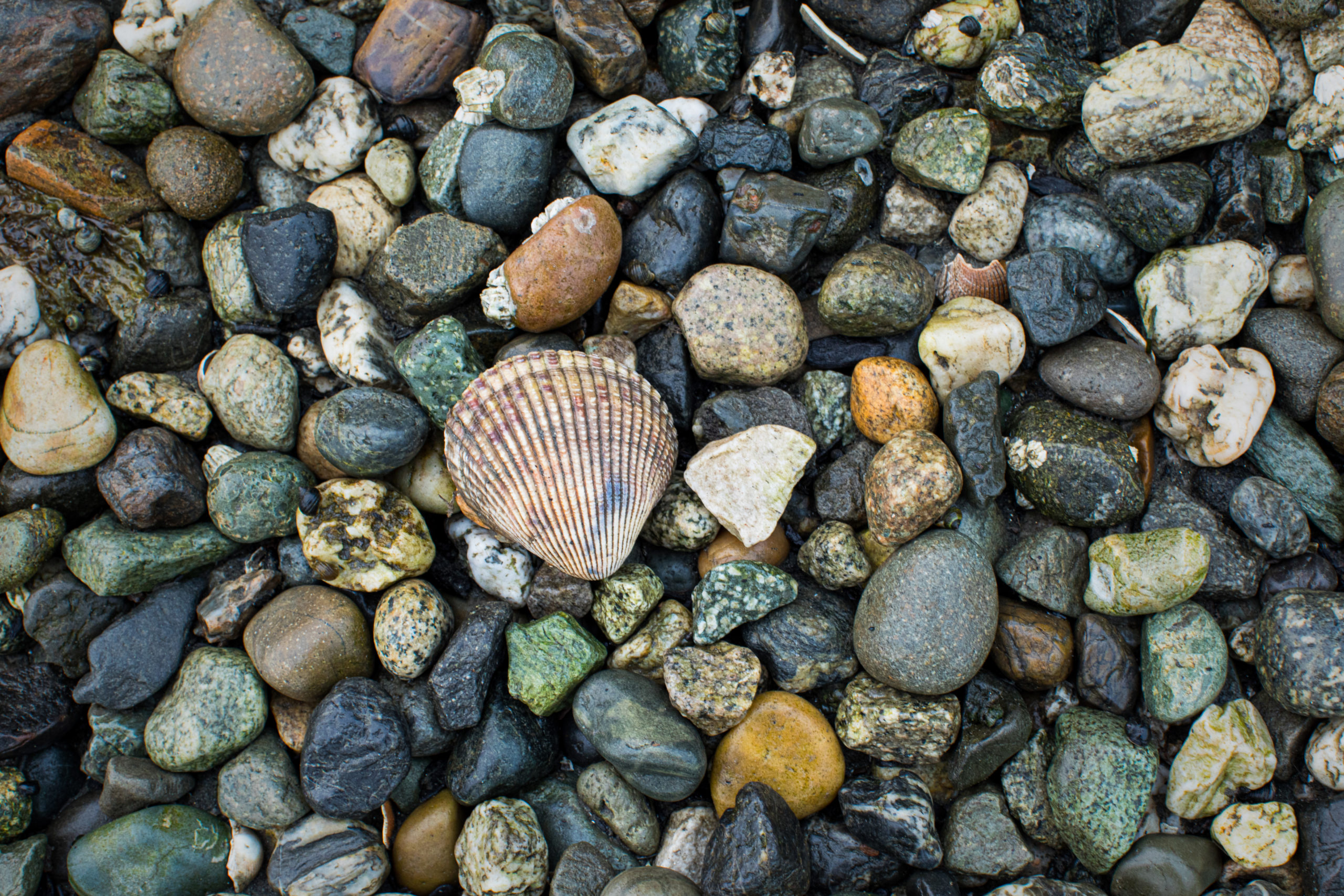
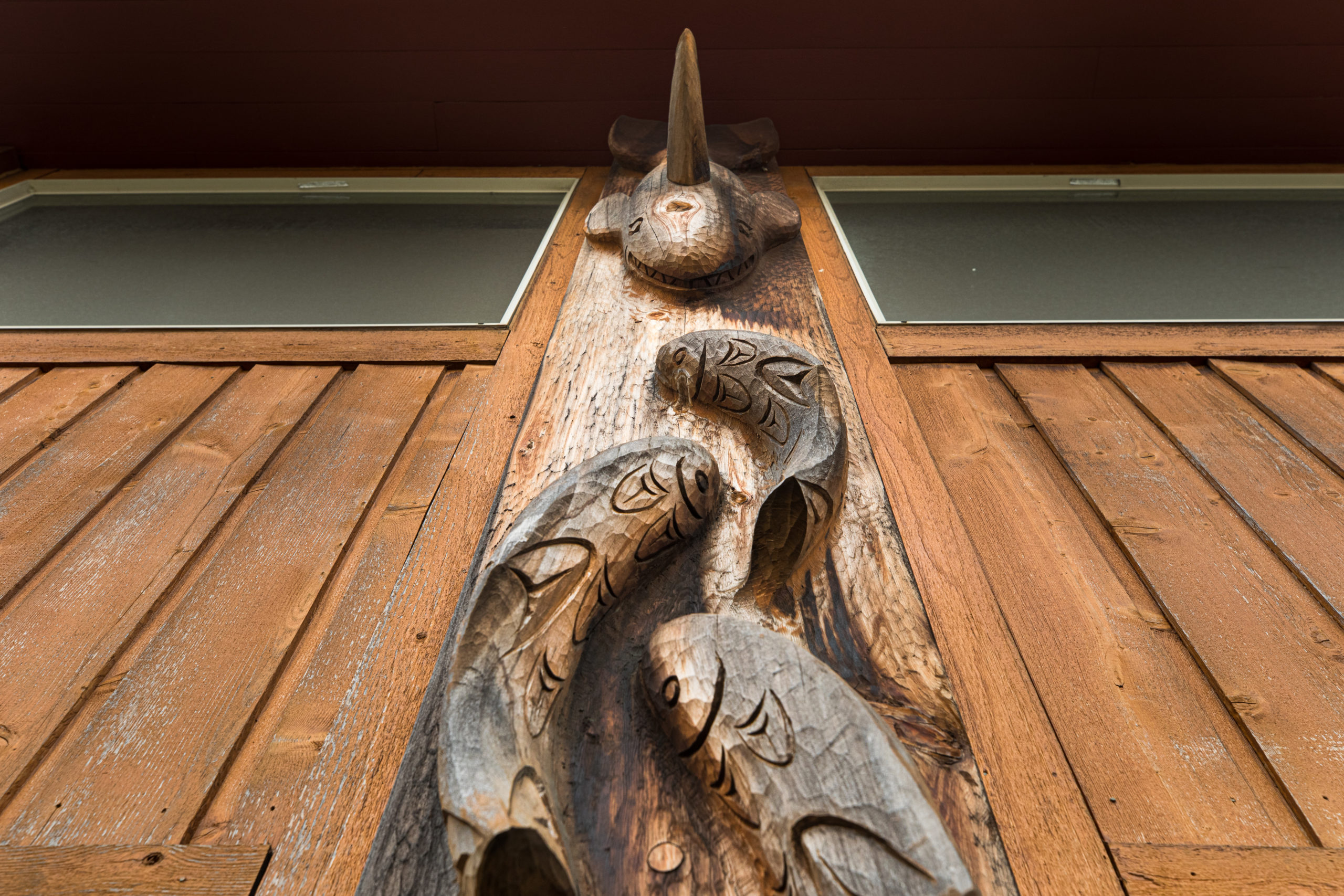
Away from her governance work, Eastwood also has led or participated in many of the virtual cultural sessions. Next to a tabletop in her Anacortes home, she set up a ring light stand, affixed her smart phone to that stand and activated the Teams app, sharing an overhead view of her hands as they created cattail mats and woolen headbands.
Samish citizens who participated in her sessions were shipped boxes of materials (such as dried cattail leaves) to use as they followed Eastwood’s step-by-step instructions from their homes.
Other tribal members have followed her lead. At her home in Seattle, Baker has virtually taught fellow citizens how to use strips of cedar bark to weave a decorative heart and a fish.
And from his place in Anacortes, Wooten has led several remote singing classes, covering “The Bone Game Song” plus Samish flag songs, farewell songs and paddle songs.
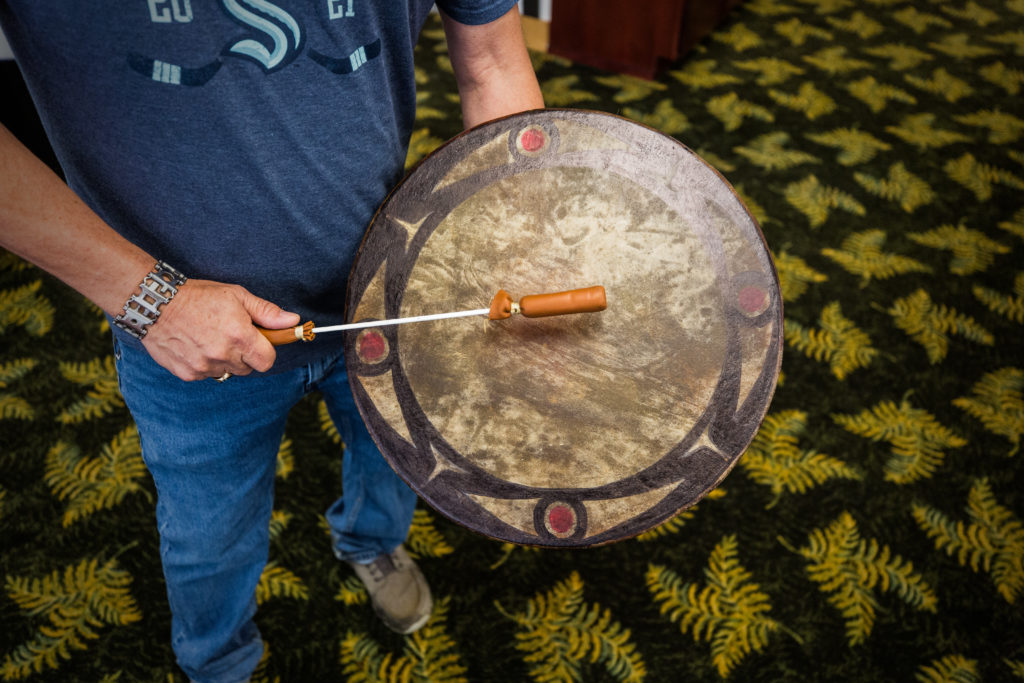
Tom Wooten plays his traditional Samish drum.
“The songs go way back – before radios and record players,” Wooten says with a smile. “Tribal citizens are hungry to know the past. To move forward, you have to know where you’ve been.
“That platform allows us to reach folks who definitely wouldn’t have been able to come, not just because of COVID, but because our membership is scattered all over the world,” he adds.
Distance is something Samish people have dealt with for generations.
The first bits of archeological evidence linked to the Samish tribe – serrated bison bones and stone butchering tools –are 14,400 years old, carbon dating showed. They were found on Orcas Island, the largest of the San Juan Islands of the Pacific Northwest.
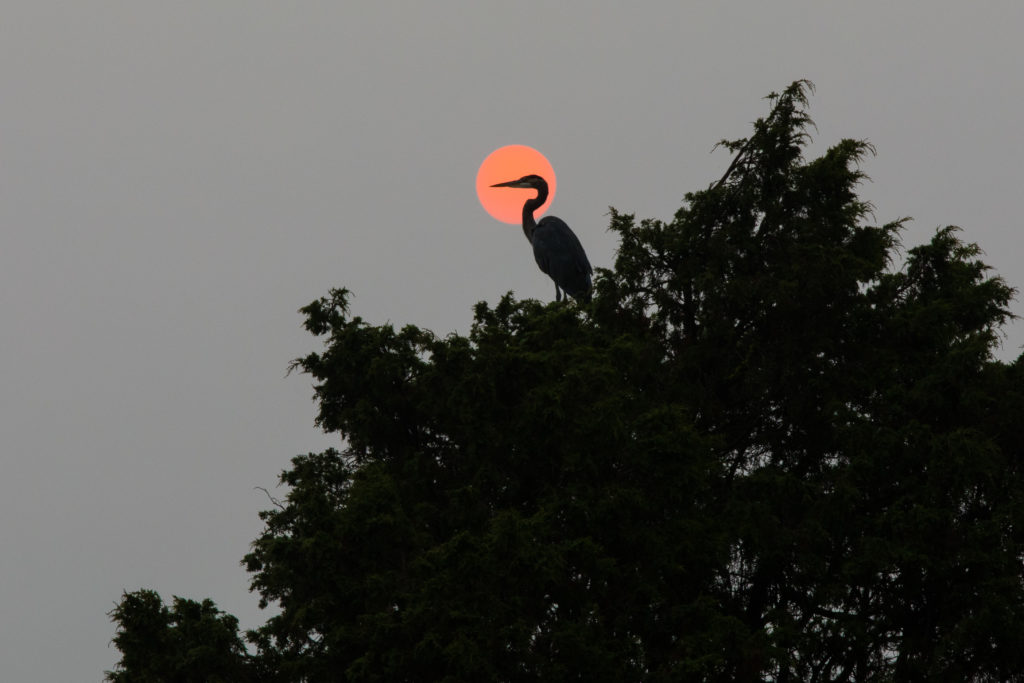
A heron perched above the shoreline in Anacortes.
Since the last Ice Age, the region has served as the traditional Samish homeland. When white settlers arrived there in the late 1800s, they began destroying a large Samish community house. In the ensuing decades, those settlers drove out scores of Samish people, creating a regional diaspora.
During World War II, some of the Samish people who had remained in Anacortes found better-paying work in the airline industry or in shipyards far away, causing the tribe to further separate.
“What made Samish people unique,” Eastwood says, “was we had to dig in and find out how to survive by following opportunities elsewhere but also stay connected with our scattered families.
“Part of our present-day story is based on the fact that the tribe hadn’t ever been given its own reservation,” she adds.
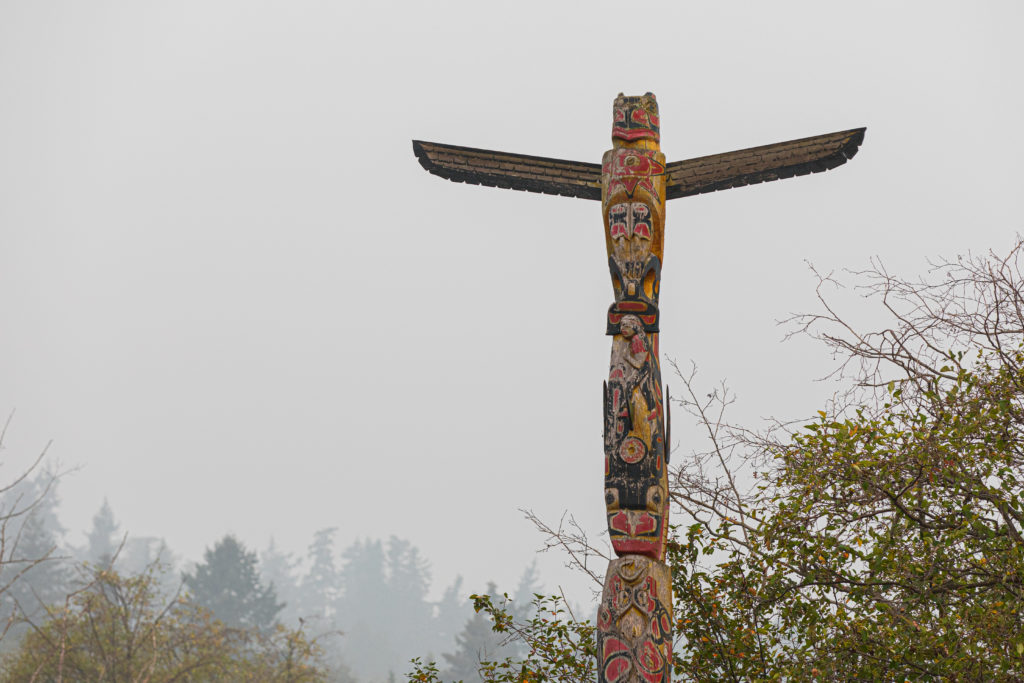
A Samish story pole stands against the sky and trees in Anacortes.
That far-flung citizenry even earned the Samish a legal nickname – one that Eastwood loves.
In 1994, the U.S. Department of Interior conducted a hearing on federal recognition of the Samish as an Indian tribe. Administrative Law Judge David Torbett conducted the hearing.
At that time – the early days of the internet – tribal leaders already were tech adopters, using cell phones, personal email, and faxes to pull together a dispersed people.
Torbett, who ruled in favor of Samish recognition, recognized their technical savvy. In his opinion, he dubbed the Samish the “Cyber Tribe.”
“It gives me chills, even today,” Eastwood says. “Literally, it makes the hair stand up on the back of my neck.”
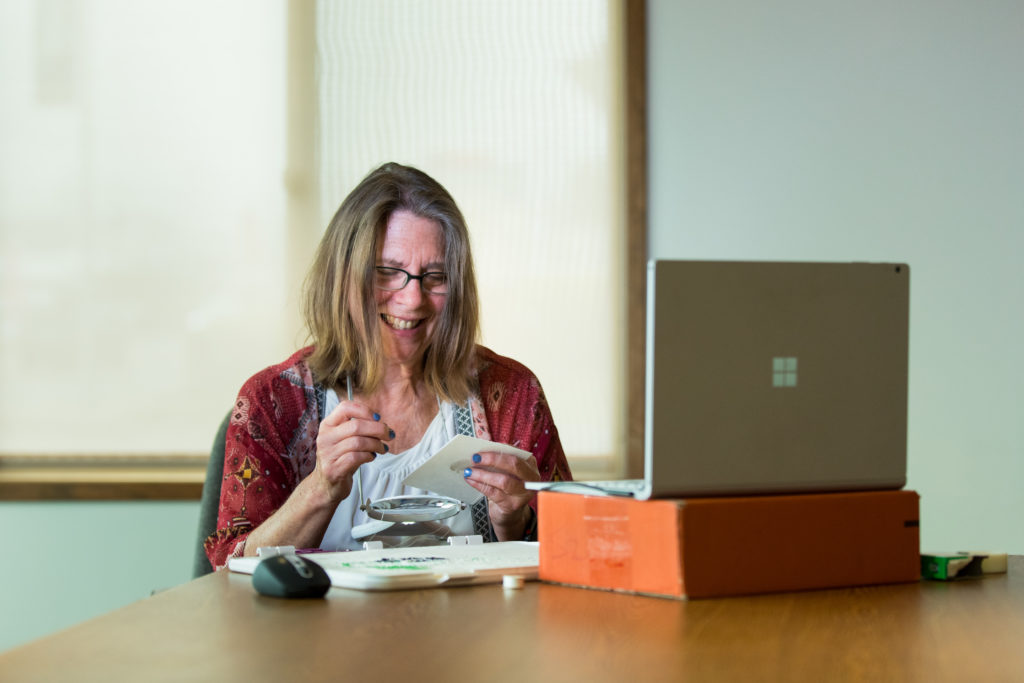
Leslie Eastwood learns traditional beading via Teams.
That same digital familiarity remains intact. The tribe has a thriving website, Facebook, and Instagram pages. Most citizens are comfortable using smart phones and apps, Eastwood says.
Their tech acumen also led Samish leaders to select a communication platform that ensured only tribal citizens could participate in the virtual sessions – particularly when it came to safeguarding the nation’s business information, Wooten says.
The Samish nation is a member of the Multi-State Information Sharing and Analysis Center (MS-ISAC), which seeks to improve the overall cybersecurity posture of the nation’s state, local, tribal and territorial governments. The MS-ISAC is part of the nonprofit Center for Internet Security (CIS).
“With the internet the way it is today, we were looking for something that had security,” Wooten says.
“It’s been a benefit for folks to interact and know what’s going on. They’re more informed and our participation has gone up during the pandemic,” he adds. “We’re going to continue to utilize Teams well beyond COVID-19. It has saved us time and money and allowed the government to keep working.”
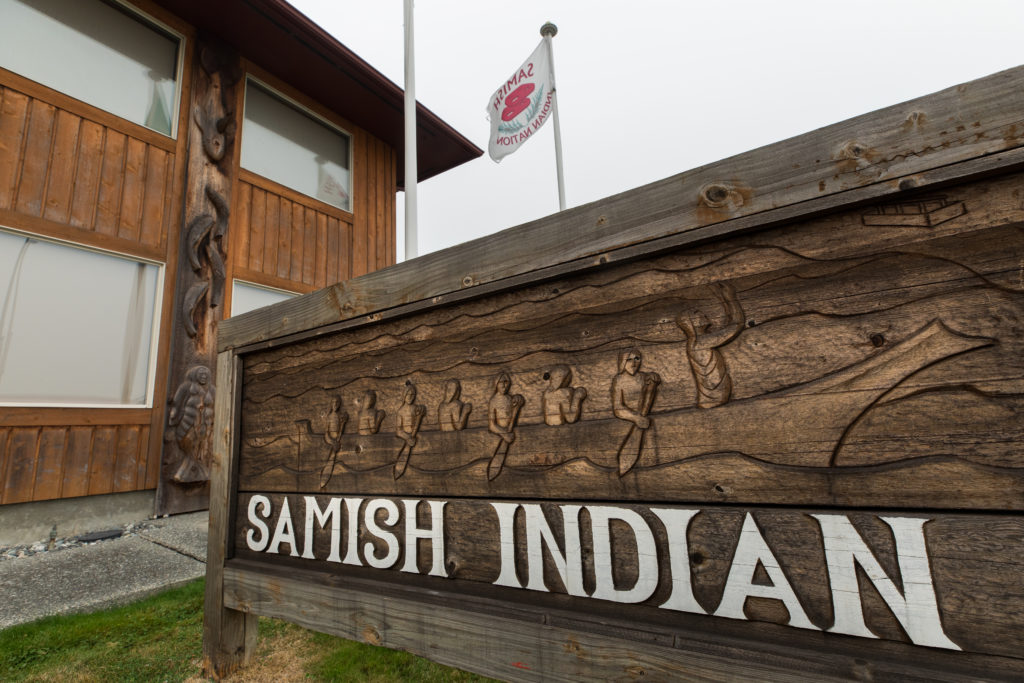
Samish Indian Nation headquarters in Anacortes.
The recommendation to choose Teams over other platforms came from JR Walters, the Samish nation’s IT director. The selection, Walters says, was rooted in frequent headlines about IT breaches and the tribe’s implementation of CIS security controls, a set of cybersecurity best practices.
But it was one early, virtual meeting that Walters never will forget, he says. It took place around the time that the World Health Organization declared COVID-19 a global pandemic in March. Samish leaders began holding daily Teams calls to discuss the nation’s situational awareness.
After several of those meetings, participants began to get a better feel for Teams functions, including custom and blurred backgrounds.
One morning, a Samish leader entered the remote meeting with a new background: The bridge of the “Enterprise,” the spaceship from the TV series “Star Trek.”
“It added relief to a situation that was feeling super stressful,” Walters says. “At the time, we didn’t know what was happening. Schools were closing. We were talking about what we were going to do as a government.
“Then someone just changes their background, and it brings a little joy,” he adds. “It lightened the mood and it made things better.”
Top photo: Tom Wooten, chairman of the Samish Indian Nation, stands along the shoreline in Anacortes, Washington.
All photos by Dan DeLong.
